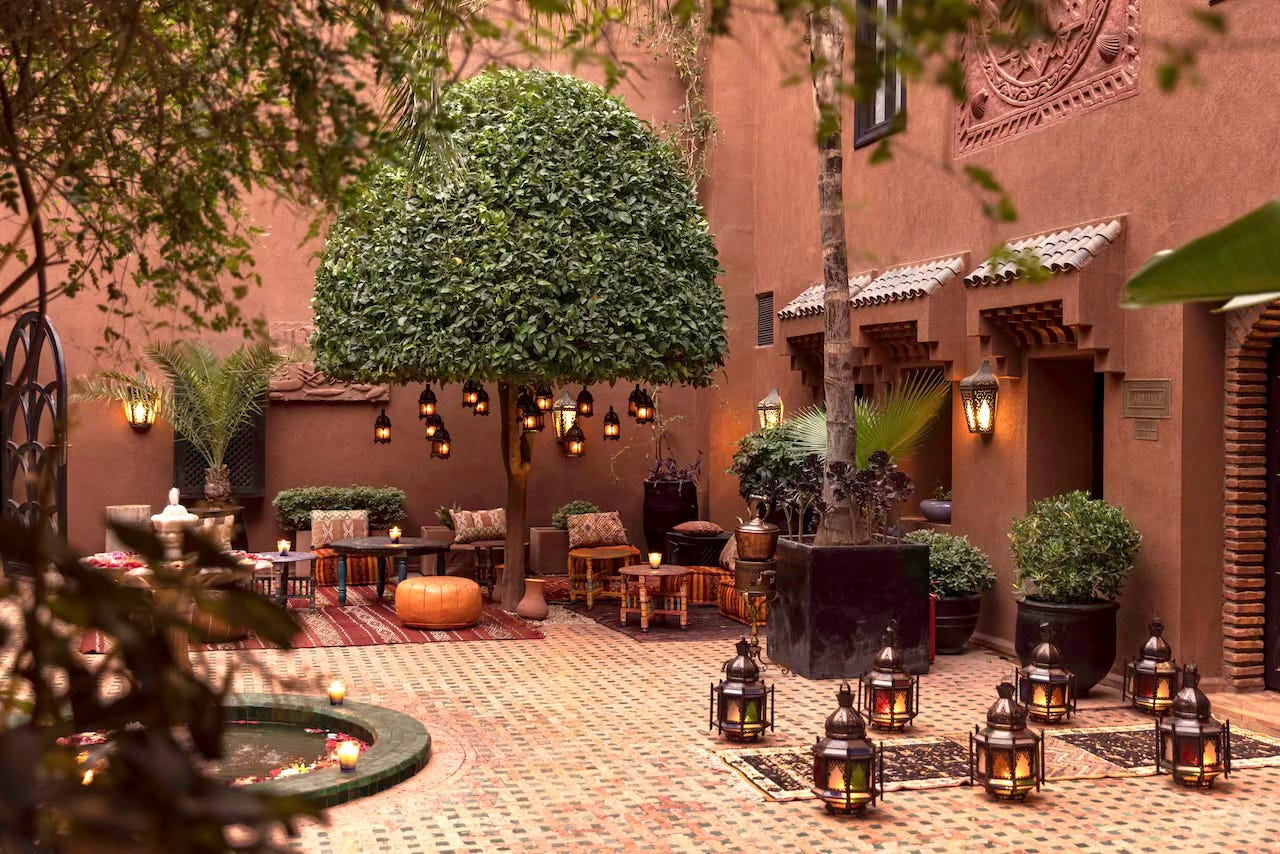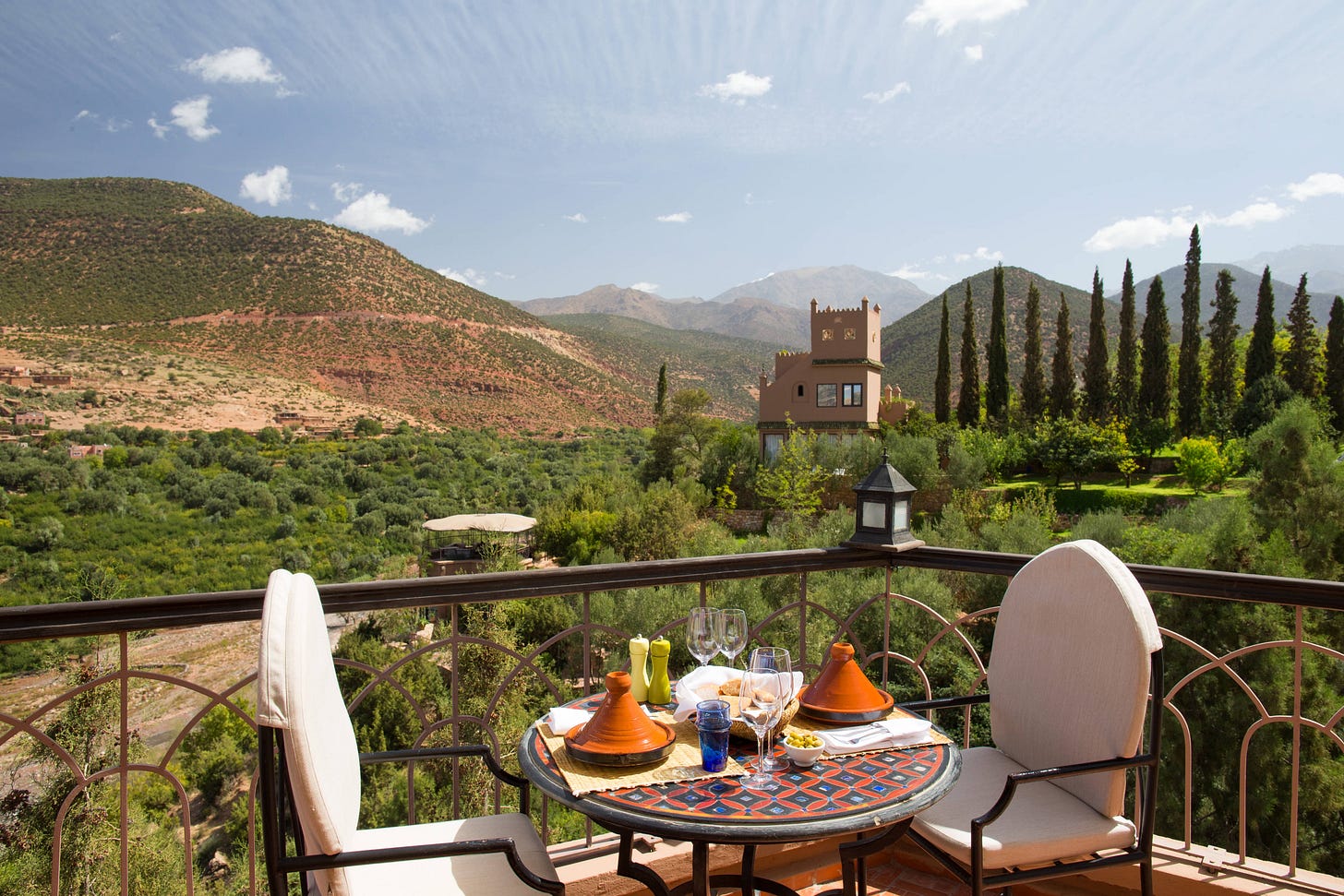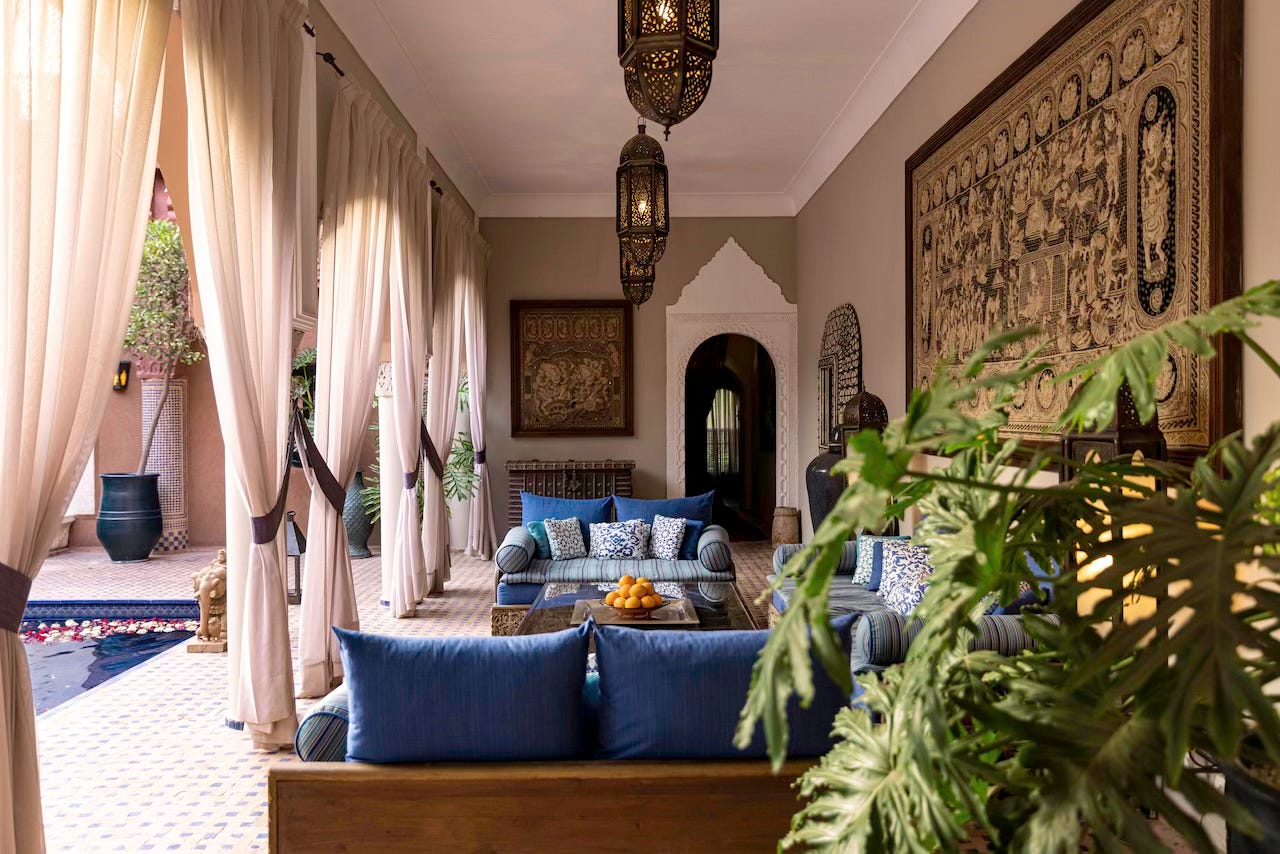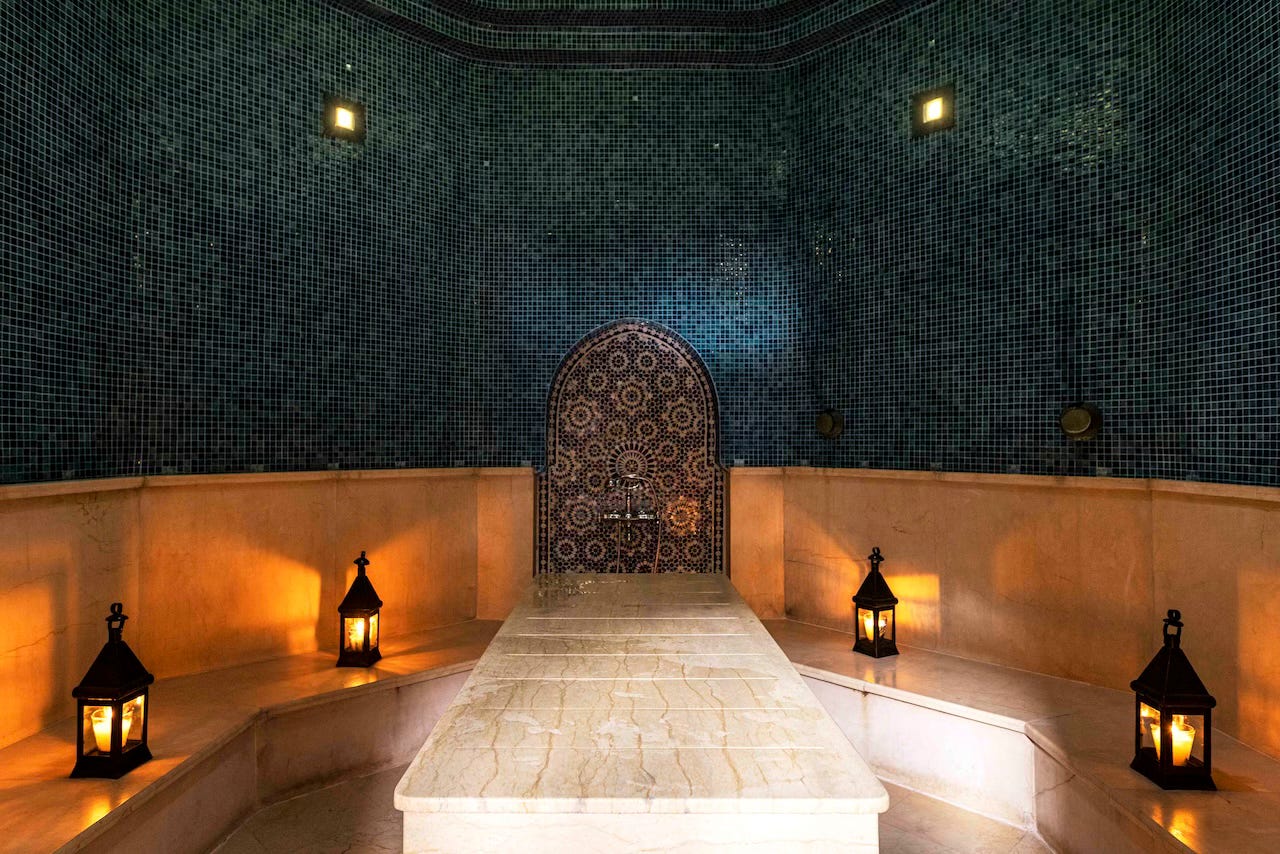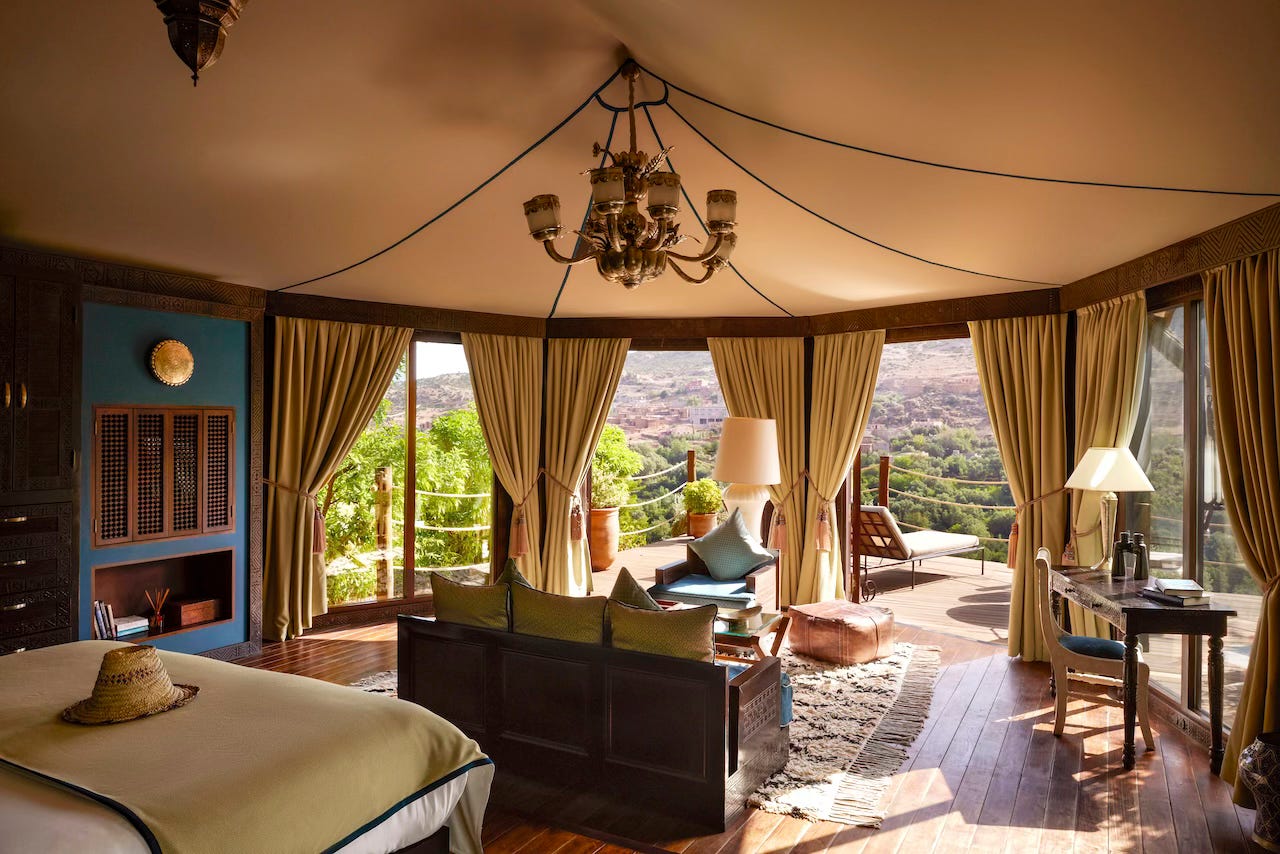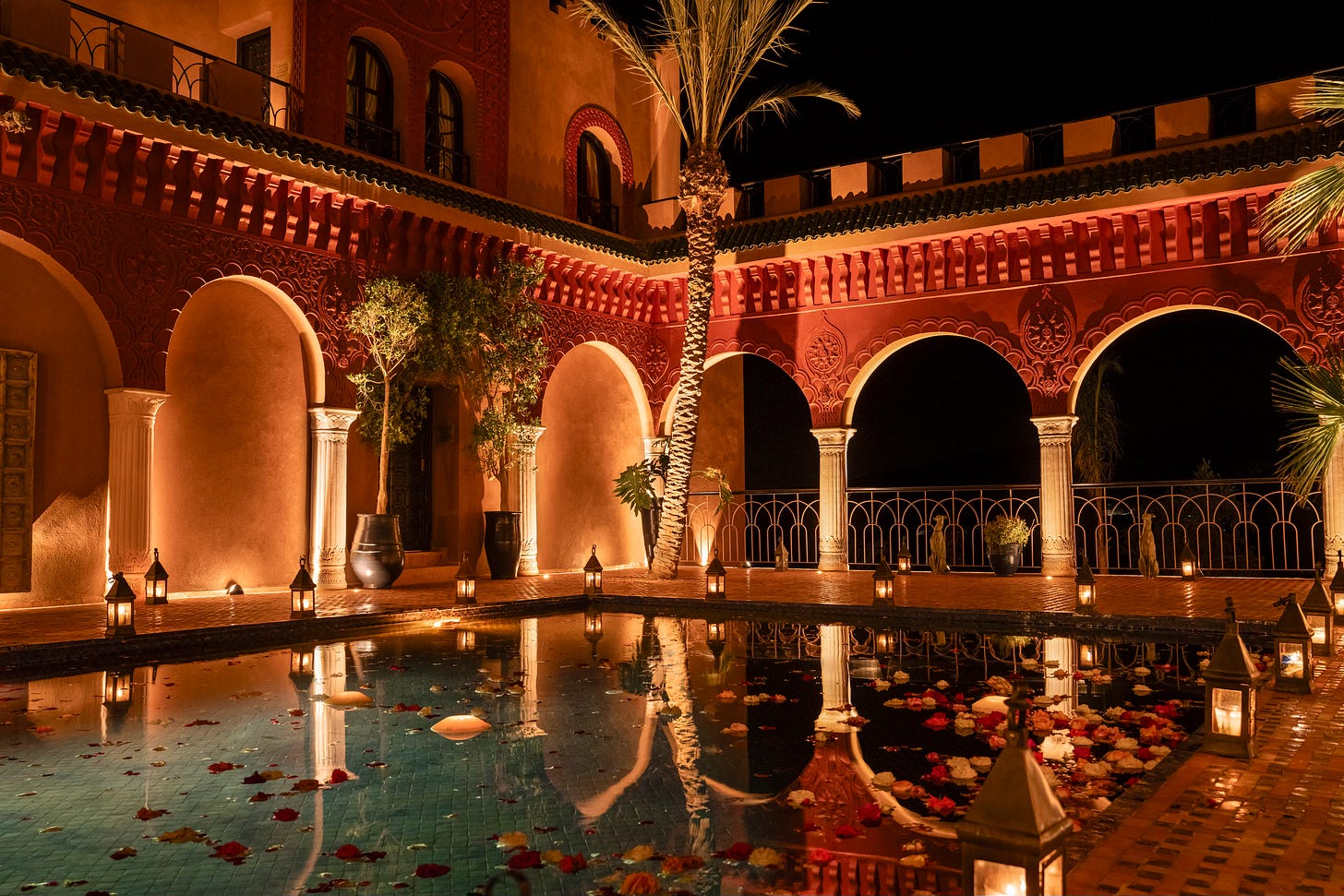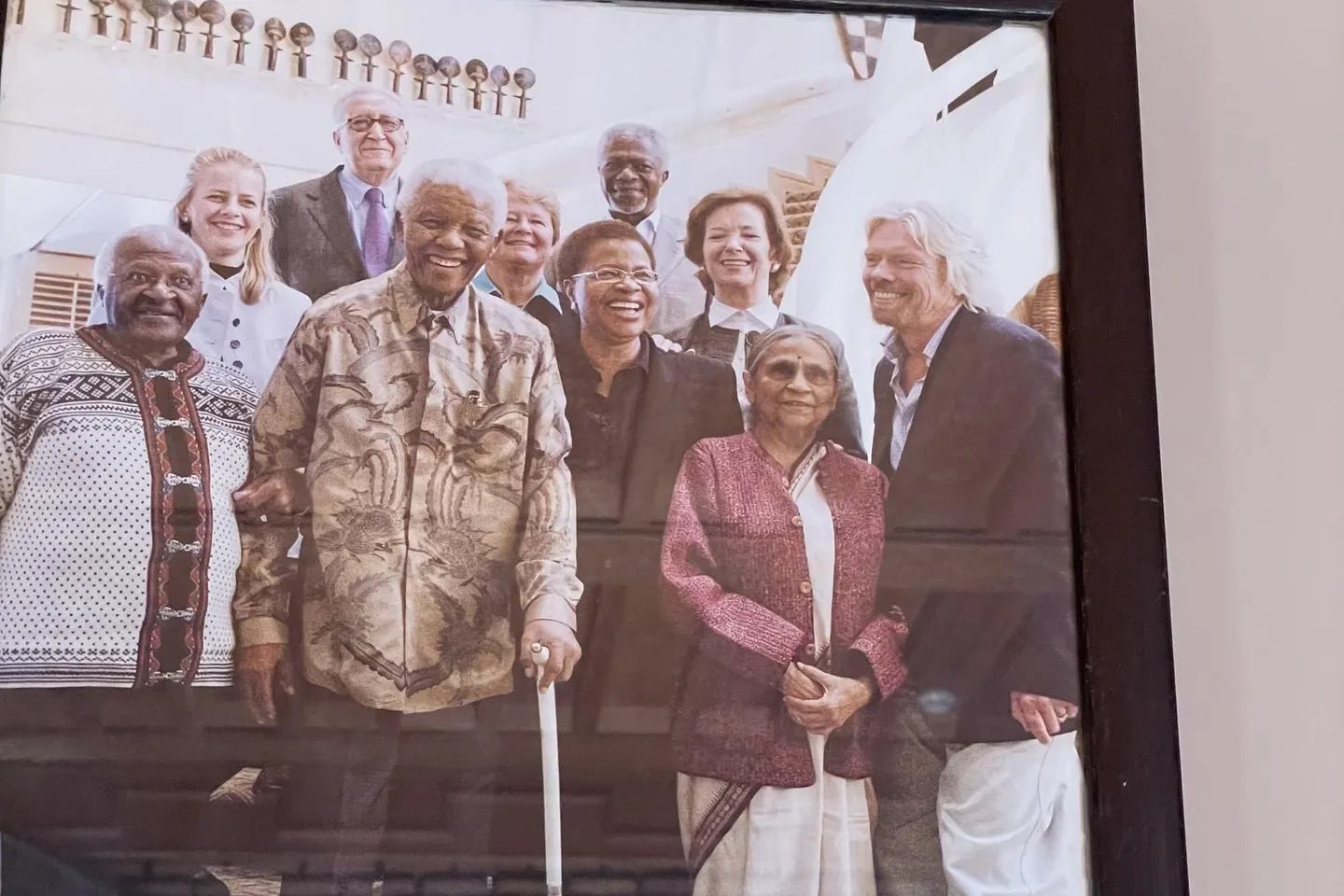Check In: Kasbah Tamadot, Morocco
After the devastating earthquake of 2023, Richard Branson has rebuilt and restored his Moroccan dream resort in the Atlas Mountains. Here's the inside story.
Editor’s Note: The story of what Branson does in the immediate aftermath of the Morocco earthquake — a story you won't find elsewhere — is an example of genuine leadership. (More Branson, less Bezos!) I am grateful to be able to spotlight hotels that foster tourism in otherwise economically desperate places. Their efforts make our world just a little more connected. And a little bit safer. This is one of those places. Happy reading xx
Something happened in the High Atlas Mountains. Something profound.
It’s a feeling others have expressed about this place before, and reminds me of something travel writer Pico Iyer said on a recent Time Sensitive podcast:
“I want to come back from any trip a different person from the one who left home. I want to be upended. Startled. And confronted with something I don’t meet in my day to day life.” ~ Pico Iyer
That sentiment begins to describe my experience at Kasbah Tamadot, Richard Branson’s newly rebuilt resort outside Marrakech, which offers, among many exotic things, hikes into the surrounding mountains and afternoon tea visits with local Berber villagers who are still recovering from the 6.8 magnitude earthquake that struck Morocco’s Al Haouz region in 2023.
Though the act of being welcomed into a private dwelling to sip home-brewed mint tea seems simple enough, it was also a window into another reality. Their lives are extremely difficult. Their conditions severe. Their religion strict. Seeing their children, with their big, expectant brown eyes and joyful-despite-all-odds energy is shattering. These little kids, four and five years old, barefoot in soiled clothes, were playing soccer in red dirt without nets and throwing stones to pass time as the sun set, and the fourth call to prayer of the day echoed across the valley. Then the dry desert chill set in. It’s hard to imagine how they survive winter.
He Bought the Kasbah
As a child welfare advocate, Richard Branson’s late mother Eve Branson had also been moved by the children. In 1998, Branson purchased the property at Eve's urging. By 2005, she had established the Eve Branson Foundation (EBF) to improve local Berber families' lives. Though Eve passed in 2021, her foundation continues, employing Berber women who create textiles for the resort and raising over $1.2 million for earthquake relief. According to Virgin representatives, an EBF-sponsored pre-school across the ravine from the Kasbah is “in the works.”
Still, the question lingered… Why spend millions rebuilding a high-end resort in a place so vulnerable to the shaking of the earth’s core?
Hung high in the lobby of the Kasbah, there is a clue. It is a framed photograph of Richard Branson standing beside Nelson Mandela, dated 1998. Mandela was on a visit to the country during his presidency. That same year, Branson purchased the Kasbah from its former owner, antiques dealer and interior designer Luciano Tempo (whose art and furnishings still fill the hotel).
It is neither a fancy frame, nor an especially large photograph, but its significance is immeasurable. In the years following their meeting, Mandela and Branson collaborated on several projects focused on Africa, via Branson's charitable arm Virgin Unite. The existence of the fully-restored Kasbah feels like a manifestation of a Branson-Mandela ethos:
“If you care passionately enough, I believe you can improve on any facet of the human experience.” ~ Richard Branson
The Restoration
Branson and his team spent the last year restoring Kasbah Tamadot’s damaged main building. During construction, they also increased the size of the property from 28 to 42 rooms, including six new riads and a second restaurant called Asayss.
The new three-bedroom riads (a traditional Moroccan house) are the big draw, sumptuously outfitted in decor that blends exoticism with luxuries like private pools and terraces. Hanging in your antique armoire, you can don your own burnous (an Arabian hooded cloak) and feel silly padding around the place in your new babouches (leather slippers), reading about Ramadan or learning how to cook a lamb tagine. Even the more modest rooftop-tented suites (for couples) bring decadent flair to tradition, with rooftop lounges and hot tubs perfect for nighttime stargazing.
The restoration works because it doesn’t resemble Branson’s party persona. There are no tricked-out DJ booths, no vinyl records, no neon signs, no overt cheek — just good food, a beautiful luncheon terrace overlooking a swimming pool, a private library, extensive gardens, an outdoor gym, mountain bikes, an indoor spa, and a real Moroccan hammam (which cannot be faked).
Everything about it feels of the place. Firstly, the entire staff, including the General Manager, is Moroccan. New furnishings were commissioned by the Eve Branson Foundation from local blacksmiths in Asni, and from artisans in Marrakech. Even in the dining room of Assays, which is fit for a Sultan, the wooden beams that uphold the massive safari tented-roof were built by a local Moroccan artisan called Hamid Agouim.
Luckily, much of the original hotel was not lost. The Berber tents, designed when the hotel was first opened, were unharmed by the earthquake. And many of the decorative items in those tents, and throughout the hotel, are from Luciano Tempo’s collection, which Branson inherited when he bought the place.
The Other VLEs
This is all ‘of a piece’ of Branson’s experiential resorts brand, Virgin Limited Edition (VLE), a group of nine retreats in the British Virgin Islands, South Africa, Spain, Kenya, and Switzerland — each with a strong intent to connect visitors to both the local community and the land.
As VLE celebrates its 25th anniversary, it continues expanding with new additions like Kenya's legendary Finch Hattons safari camp, which offers a classic Out of Africa experience in Tsavo West National Park with views of Mount Kilimanjaro. James Bermingham, the CEO of Virgin Hotels Collection, notes that unlike Virgin Hotels, which are modern social hubs based in major gateway cities, VLE properties are "smaller in size, and very much activity based," and are intentionally located in far-flung "extraordinary destinations" that affluent travelers will find "super enriching and different."
How many more of these can Virgin pull off? “It’s hard to put a number on it; but I would say if we add one or two extraordinary new destinations every two to three years, we’d be thrilled with that. As long as the quality measures up to the Kasbah level; it’s a quality game,” he says.
When asked how they will fund future growth, Bermingham reveals the news: Both Virgin Hotels and VLE are entering the branded residences business, which is the prevailing model used across the luxury hotel industry. “It’s not easy to develop new luxury hotels without a residential component these days. Because the cost of construction is such that it requires an economic engine, and that is branded residences.”
The After Shock
Kasbah Tamadot first opened as one of the original Virgin Limited Edition properties in 2005, but its personal importance to Richard Branson didn’t become clear to outsiders until he responded to the 2023 earthquake.
David Redouane Assabbab, the soft-spoken general manager of Kasbah Tamadot, sat in a soft sunbeam in the library and spent a few hours regaling the tale of what happened that fateful night, and in the days following. He was there, and it was a full house.
“We had 28 bedrooms full, with 56 guests. That night was the most complicated night in my life,” he recalls. Miraculously no one was injured at the hotel, and to ensure that fact, guests slept in sleeping bags on the open tennis court, before being evacuated to Marrakech as soon as the roads were cleared, by 4am the next day.
The earthquake claimed more than 2,900 lives, and the epicenter was located within the High Atlas Mountains. It was the deadliest earthquake in Morocco since 1960.
“We were frantically distributing food and tents. I think we got something like 3,000 tents from the US and Canada,” said Assabbab. “That was down to Richard. He and the other donors he found paid for it. The very next day, he was on his private jet loaded with tents, clothes and sleeping bags. He came here himself, and distributed them in the villages the second night, because at that time, Morocco didn't allow foreign aid from many European countries for political reasons. So he had to smuggle tents in on his jet.”
He shows me photo after photo of Branson in a dusty t-shirt and cargo pants carrying huge sacks off his plane, talking to locals and assessing the damage. You can almost see his mind working through every possible solution. During the year-long closure of the Kasbah, all 160 employees remained employed.
“See what I mean? You can't not love Branson.”





